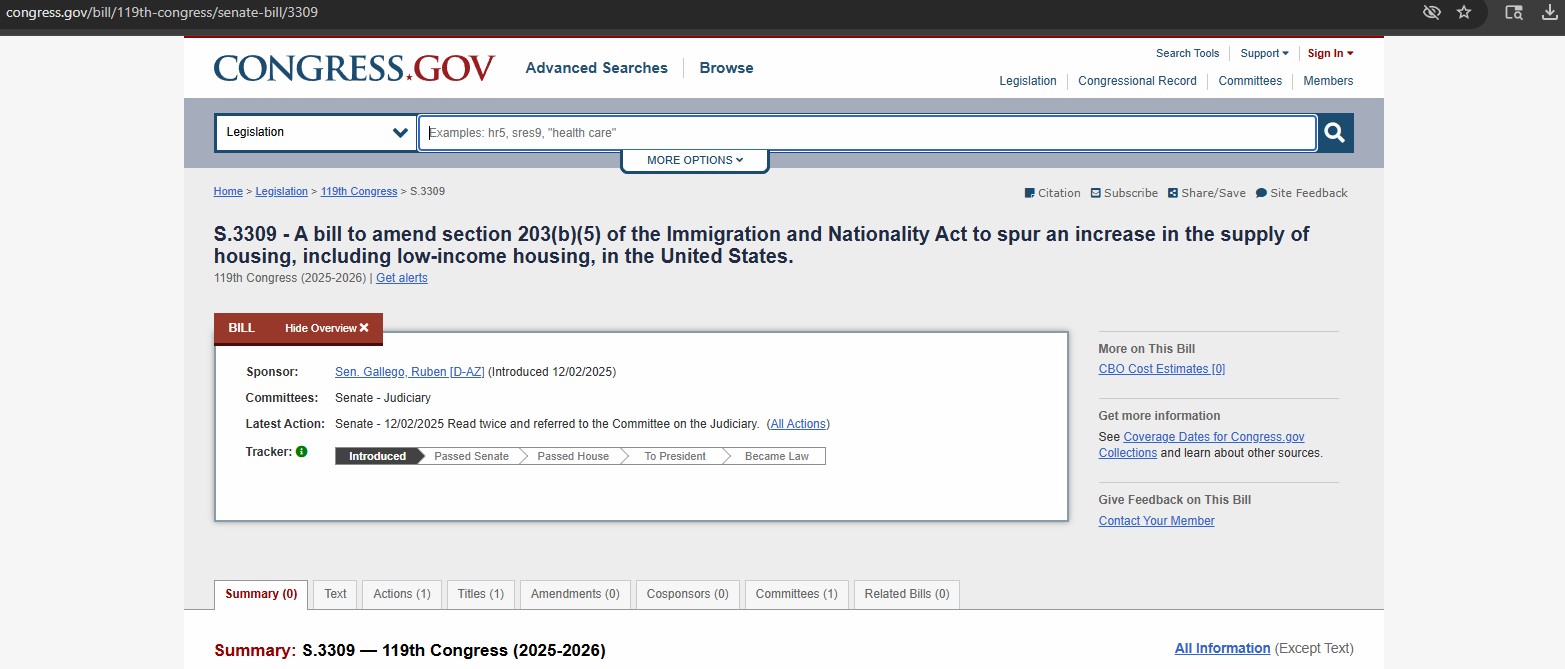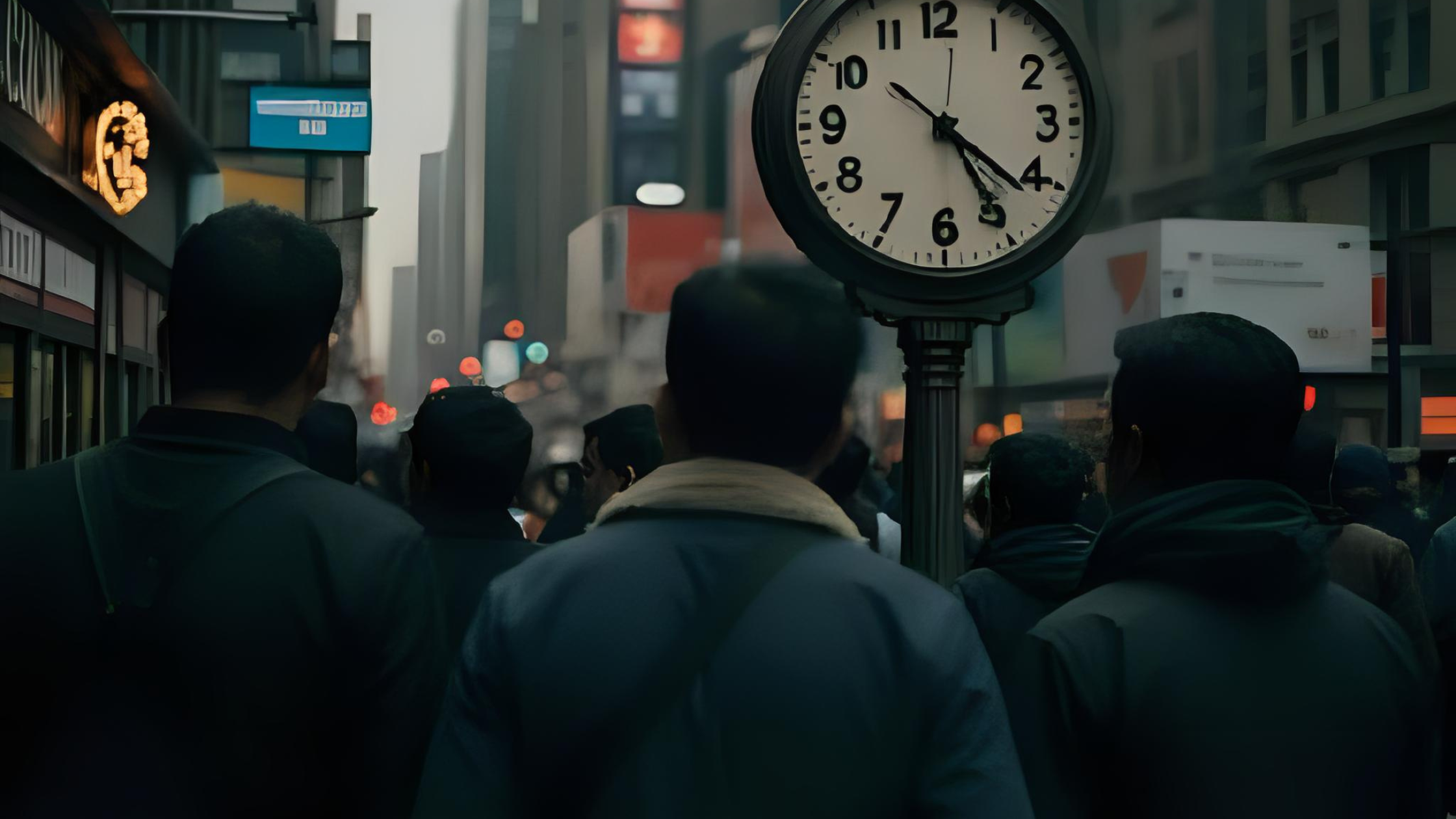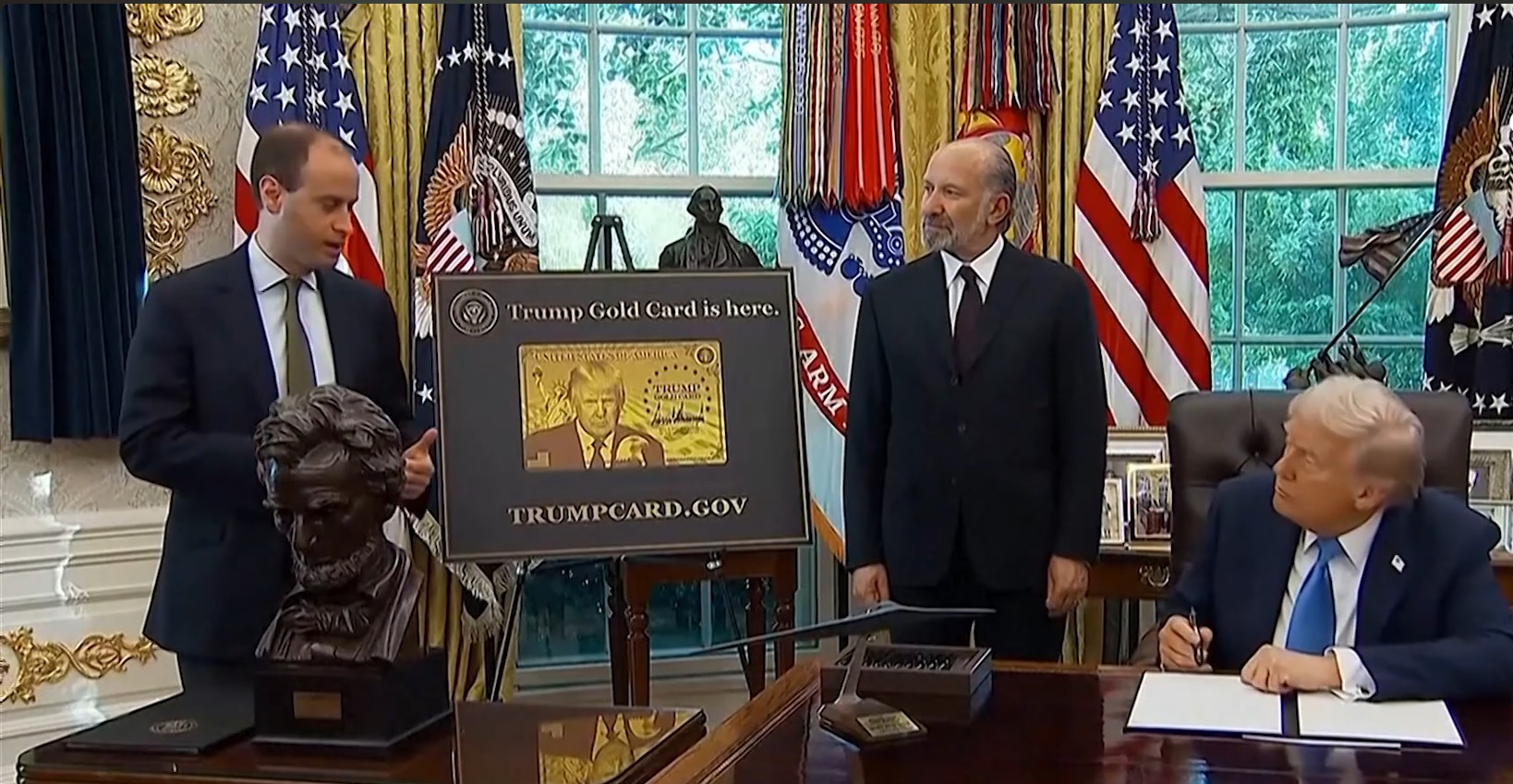How long must pre-RIA EB-5 applicants expect to wait for a visa?
30th May, 2023
AIIA utilizes the data we have gathered through our recent FOIA campaigns to offer EB-5 investors an overall estimation on the expected wait time of EB-5 investors from backlogged countries based on historical data trends. With USCIS current petition processing times, the outlooks for most retrogressed immigrants is grim, considering little has been done since the passage of the RIA to remediate wait times.

*Update: Visa Wait Time Calculator has been deprecated. Please reach out to us for updated calculations.*
All EB-5 applicants have suffered from extensive processing delays, but applicants from China, Vietnam, and India face a special barrier: wait times for visa availability. The Visa Bulletin shows that Chinese receiving EB-5 visas today have already waited for almost eight years to receive a conditional green card! Furthermore, AIIA’s analysis of recent data indicates Chinese and Indians near the end of the unreserved visa queue (i.e. more recent priority dates) could have at least eight more years to wait just for conditional permanent residence. To learn more about the visa backlog and its significance in calculating this, read AIIA’s guide to understanding the visa backlog.
Visa backlogs and long wait times happen when demand exceeds supply for visa numbers. Predicting visa wait times requires quantifying visa demand, which the government makes very difficult. USCIS does not regularly report I-526 or I-526E filings by country, is not transparent about adjudication trends or pending inventory, and the Department of State (DoS) provides limited data on applicants who have had their files transferred to the National Visa Center (NVC) (we call the time after the transfer the “visa stage”). However, to fill gaps in the public knowledge of these backlogs, AIIA has tackled the challenge of a realistic backlog assessment, including filing Freedom of Information Act requests for data.
In response to a recent AIIA FOIA request, USCIS finally disclosed the number of I-526 petitions pending by country as of March 2022. This is key information, because March 2022 marks the transition between the old and new law for EB-5 visa availability. All EB-5 investors who filed their I-526 before March 2022 are now in a new queue for unreserved EB-5 visas, while investors who filed I-526 or I-526Es after March 2022 will likely choose to join the new visa queues for reserved TEA visas.
By combining FOIA I-526 data with reports on visa-stage demand from the DoS and USCIS, and further applying assumptions about approval/survival rates and family size, AIIA has estimated the size of the unreserved visa queue as of March 2022. This queue can then be compared against estimates for unreserved EB-5 visa supply to calculate visa wait time estimates for Chinese, Vietnamese, and Indian investors with a March 2022 priority date. This wait time estimate is for the end of the processing queue, with earlier priority dates having correspondingly shorter wait time estimates, and other assumptions being equal.
Wait time estimates incorporate many assumptions, including future approval rates, drop-out rates, family size, processing capacity and order, consular capacity, future unreserved visa demand, and more.
In the following estimates, AIIA has chosen assumptions that are consistent with historical trends and also optimistic in terms of wait time impact. Actual wait times could be longer than our base estimate if fewer denials and dropouts happen, if fewer visas get carried over, and if the government continues to fail in issuing the total number of visas technically available.
How could actual wait times be shorter than the queue-based estimate you may ask? Two major possibilities determine this outcome: demand miscalculation or governmental supply relief. Actual wait times will be shorter than AIIA’s estimate if actual visa demand proves much smaller than one might expect from the number of investors who filed I-526, and historical approval and family size trends. Actual wait times could also be shorter if the immigrant investor community can successfully advocate for measures that increase the number of visas made available and issued.
When even optimistic wait time estimates are still intolerably long, we must put our efforts to address the EB-5 Backlog Problem and advance the one hope of visa supply relief.
| CHINA (analysis as of March 2022) | Pending at I-526 stage | Pending at Visa Stage (visa application or I-485) | Total |
| FACT: China-born principal applicants (investors) in process as of March 2022 | 4,823 | 18,095 | |
| VISA DEMAND ESTIMATE: Estimated total China-born applicants (principals + family) who were in process as of March 2022 and who will persevere to get approved for a visa * | ≈ 6,000 | ≈ 39,000 | ≈ 45,000 |
| VISA SUPPLY ESTIMATE: Estimated average annual unreserved visas available to China 2022-2030 ** | ≈ 5,600 | ||
| VISA TIME ESTIMATE: Estimated total wait time for a visa for a March 2022 China priority date | ≈ 45,000/5,600 ≈ 8 years
(i.e. 2029) |
*DEMAND ESTIMATE ASSUMPTIONS: The model uses these assumptions to estimate visa demand from data for principal applicants: 60% future I-526 survival/approval rate, 2.7 visas per principal/investor, 80% visa-stage survival/approval rate. This is consistent with recent history but the future could differ.
**SUPPLY ASSUMPTIONS: The model assumes all reserved visas in 2022 and 2023 will go unused and carry over; continued low-volume I-526 processing; low incoming demand for unreserved visas; most “otherwise unused” visas go to China; and consular processing keeps up with supply.
| INDIA (analysis as of March 2022) | Pending at I-526 stage | Pending at NVC | Pending I-485 | Total |
| India-born principal applicants (investors) in process as of March 2022 | 2,175 | |||
| VISA DEMAND ESTIMATE: Estimated total India-born applicants (principals + family) who were in process as of March 2022 and who will persevere to get approved for a visa * | ≈ 3,600 | ≈ 1,900 | ≈ 700 | ≈ 6,200 |
| VISA SUPPLY ESTIMATE: Estimated average annual unreserved visas available to India 2022-2029 ** | ≈ 700 | |||
| VISA TIME ESTIMATE: Estimated total wait time for a visa for a March 2022 India priority date | ≈ 6,200/700 ≈ 9 years
(i.e. 2030) |
*DEMAND ESTIMATE ASSUMPTIONS: The model uses these assumptions to estimate visa demand: 89% I-526 survival/approval rate,, 2.26 visas per principal, 83% visa-stage survival/approval rate. This is consistent with recent history, but the future could differ.
**SUPPLY ASSUMPTIONS: Reserved visa supply under country caps in a normal year is about 10,000*68%*7%=, but the model assumes a higher number due to higher EB visa limits and carryover of unused reserved visas during the prediction period. The model further assumes continued low-volume “first in, first out” I-526 processing, most “otherwise unused” visas go to China, and that visa issuance keeps up with supply.
| VIETNAM (analysis as of March 2022) | Pending at I-526 stage | Pending at NVC | Pending I-485 | Total |
| Vietnam-born principal applicants (investors) in process as of March 2022 | 1,028 | |||
| VISA DEMAND ESTIMATE: Estimated total Vietnam-born applicants (principals + family) who were in process as of March 2022 and who will persevere to get approved for a visa * | ≈ 3,200 | ≈ 1,300 | ≈ 40 | ≈ 4,500 |
| VISA SUPPLY ESTIMATE: Estimated average annual unreserved visas available to Vietnam 2022-2028 ** | ≈ 660 | |||
| VISA TIME ESTIMATE: Estimated total wait time for a visa for a March 2022 Vietnam priority date | ≈ 4,500/660 ≈ 7 years
(i.e. 2028) |
*DEMAND ESTIMATE ASSUMPTIONS: The model multiplies the number of pending I-526 principal applicants by 88% I-526 survival/approval rate, 3.81 visas per principal, 92% visa-stage survival/approval rate.. This is consistent with recent history but the future could differ.
**SUPPLY ASSUMPTIONS: Reserved visa supply under country caps in a normal year is about 10,000*68%*7%, but the model assumes a higher number due to higher EB visa limits and carryover of unused reserved visas during the prediction period. However, the estimated average is lower than India due to the difference in actual visas issued in FY2022. The model further assumes continued low-volume but FIFO I-526 processing, that most “otherwise unused” visas go to China, and that visa issuance keeps up with supply.
Our calculations may be more optimistic than the realistic wait times investors must endure. AIIA believe the visa backlog is much more pervasive than many think, and yet USCIS and the DOS fail to release any information about the size of the pending inventory, or any other clarifying factors about the visa backlogs. Meanwhile, investors are left behind in an immigration backlog which is far worse than expected. It is important that investors know exactly how long they are expected to wait, and AIIA hopes to provide a working estimate to help them. Therefore, we have created an adjustable calculator to help investors determine when they may receive their green card.
AIIA is working on a calculator that will allow users to enter a priority date and adjust approval rate and family size assumptions to model the wait time impact so they may estimate when their priority date may become current and calculate how long it may take them to move forward and get their conditional green card. Our first version of this calculator will generate results for China, India, and Vietnam. However, we plan to build out future capabilities for other countries soon and other variables soon. Calculator will be available to all AIIA members in the Current Investors section of our Resources page.
To support the work that the Alliance does for the immigrant investor community, please consider making a donation or becoming a member with our organization. Our work is 100% donor funded, and every contribution to our mission really helps. For any questions or comments about this article or our mission, please reach out to our team using our contact form.
Leave your comments
Responses (4)
Related Posts

We Congratulate Senator Gallego for New Legislation that Leverages the EB-5 Program to Build Affordable Housing

We Won The EB-5 Fee Increase Lawsuit

One Year Left to Invest in a EB-5 Regional Center Project

Trump Gold Card: A New Green Card Pathway Competing with EB-5

Stay Up To Date With AIIA
Join our newsletter to stay up to date on EB-5 updates.
By subscribing you agree to with our Privacy Policy and provide consent to receive updates from our company.
Recommended Resources

The Issue of Aging Out in EB-5
The Child Status Protection Act (CSPA) helps freeze a child’s age on EB-5 petitions, but long visa backlogs still risk...
Read More
The Sale of EB-5 Securities Offerings
EB-5 securities sales often use Regulation D (U.S. investors) and Regulation S (foreign investors) exemptions to avoid SEC registration while...
Read More
Choosing between Direct vs Regional Center EB-5 financing
Direct EB-5 suits single investors creating direct jobs; Regional Center EB-5 pools multiple investors, counting direct and indirect jobs for...
Read MoreRecent Blog Posts

We Congratulate Senator Gallego for New Legislation that Leverages the EB-5 Program to Build Affordable Housing
Sen. Gallego's EB-5 bill mobilizes foreign capital to build affordable housing. This collaboration has boosted AIIA's Congressional ties & credibility...
Learn More
We Won The EB-5 Fee Increase Lawsuit
AIIA successfully won its lawsuit against USCIS’s April 2024 EB-5 fee increases, with a federal judge ruling that the agency...
Learn More
One Year Left to Invest in a EB-5 Regional Center Project
AIIA warns that EB-5 Regional Center investors will lose protection after Sept. 30, 2026 unless they file I-526E petitions before...
Learn More
Trump Gold Card: A New Green Card Pathway Competing with EB-5
Trump’s new $1M “Gold Card” visa plan competes directly with EB-5 and raises serious legal concerns, as it lacks statutory...
Learn MoreGet In Touch With Us
If you have any questions, inquiries, or collaboration proposals, please don’t hesitate to reach out to us.

This is fantastic! Truly best in class.
This project is very important because I want get my visa
Fraud program that’s keeping alive shoddy developers, lawyers, and fianciers – all making hay at the cost of gullible investors. They have made a mockers of the rule of law with 2022 EB5 RIA. They will change the rules on the post 2022 applicants, just to ensure that the $$$ spigot keeps flowing.
Is there a way we can cancel the pre RIA application and file a new application under post 2022 TIA ? Thanks